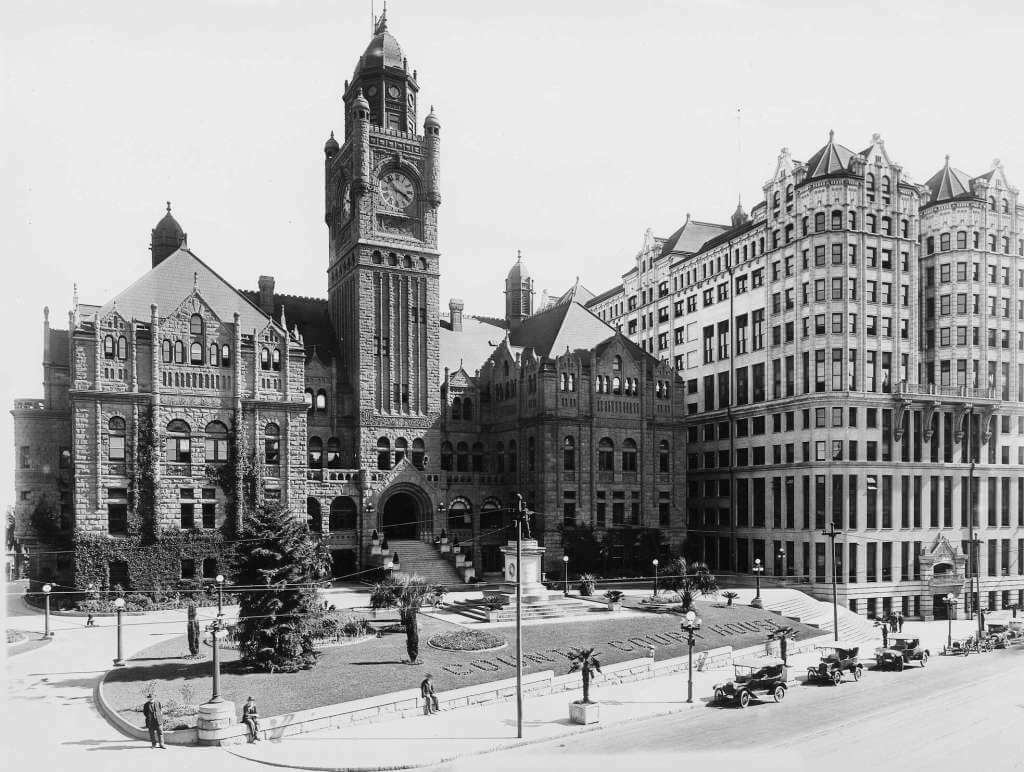The Flâneur & The City: Victorian Los Angeles Part 2
To sign up for this free event: First register as a user on this site, and then return to this page. Refresh the page and the signup tab will appear just to the left, above this paragraph. Click “signup” and reserve your spot. No plus-ones; each guest must register individually.
ABOUT THIS TOUR:
For the latest installment of urban historian Richard Schave‘s site-specific discussion series “The Flâneur & The City,” Richard (Esotouric bus adventures) is joined by architectural historian Nathan Marsak (1947project, On Bunker Hill, In SRO Land).
Part Two of the Victorian Downtown walking tour will cover First Street north to Aliso and Los Angeles Street west to Broadway. It is a distinct departure from Part One, which almost exclusively dealt with the development of the mature business block of the 1880s and ‘90s. This tour will deal, for the most part, with the hotels and early business blocks of the 1870s, whose unique stylistic developments in this “bust out” time are heavily influenced by the experiences of Angelenoes in the “tempestuous ‘60s.” This is an era which saw drought, disease, plagues (of grasshoppers no less), and the bottom falling out of the real estate market, and those citizens who dared remain were the toughest and most stubborn ones.
The Bella Union, US Hotel, Hotel de Paris, the Baker Block, the Temple Block, and the whole slew of county and city buildings surrounding Pound Cake Hill and Fort Moore will all be discussed as we orient you to their locations beneath what exists today.
It is a Los Angeles that you will not recognize, and yet, strangely, you will not be surprised at all. For as we hold as a vademecum for this tour that haunting quote from Victor Hugo’s The Hunchback of Notre-Dame: “When a man understands the art of seeing, he can trace the spirit of an age and the features of a king even in the knocker on a door.”
By the conclusion of Part Two of Victorian Downtown, with only the rich region of the Plaza left for Part Three, we will have covered sufficient ground and decades to begin to make sweeping generalizations about the aesthetics of Victorian Los Angeles and how they drove the growth, appearance and very spirit of the city.
ABOUT THE TOUR SERIES: “The Flâneur & The City” is an ongoing attempt to explore some of the more important issues revealed by the constantly changing heart of the metropolis. The core notion of the series is of culture and history as commodities that are packaged and sold to a target demographic; meanwhile, it’s the ignored and seemingly worthless scraps of meaning found on the sidewalks and marketplaces where the true remnants of positive public space can be found. All interpretations and nuisances of the word flâneur are examined—from the modern-day aesthete dreaming of Baudelaire while carried along in the human tide past the stalls and shops of Broadway, to its more recent and perhaps relevant use, someone who is loitering. At its heart this series is a celebration of the simple act of getting out of your car, walking through a neighborhood and learning to see it with your own eyes.
